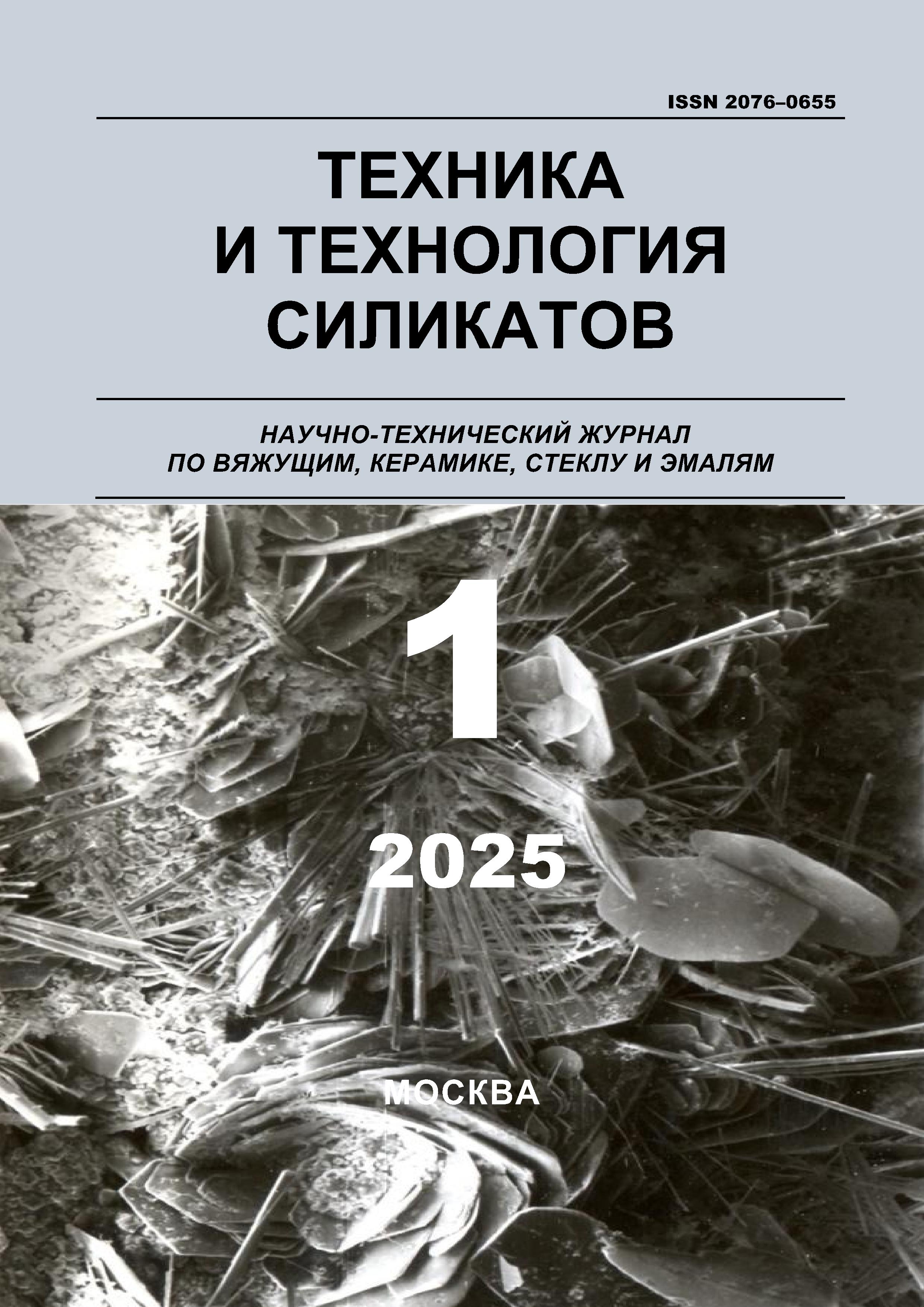employee
Moscow, Moscow, Russian Federation
employee
Moscow, Moscow, Russian Federation
employee
Moscow, Moscow, Russian Federation
graduate student
Moscow, Moscow, Russian Federation
student
Moscow, Moscow, Russian Federation
student
Moscow, Moscow, Russian Federation
UDC 691.32
CSCSTI 67.09
Russian Classification of Professions by Education 08.06.01
Russian Library and Bibliographic Classification 383
Russian Trade and Bibliographic Classification 5006
A hot dry climate has a significant impact on the properties of concrete. The paper presents the results of experimental studies in the development of the composition of a composite binder consisting of Portland cement and a dolomite microfiller obtained by activating the screening of dolomite crushing in a ball laboratory mill. The content of dolomite filler in Portland cement was 10, 30 and 50%. It has been shown that dolomite micron filler, when its content in the binder is more than 10%, reduces compressive strength. It has been found that dolomite filler reduces water consumption, reduces setting time and reduces shrinkage of the composite binder during hardening. To optimize the composition, a two-factor composite (rotatable) experiment with a quadratic model was used, which ensures maximum strength when the required technological parameters are achieved. The optimal composition of the composite binder, consisting of 67% Portland cement and 23% dolomite filler with a specific surface area of 600 cm2/g, has been established. Therefore, to increase the crack resistance of concrete, the use of dolomite filler as part of a composite binder for concrete in dry, hot climates is relevant, due to its low-er shrinkage during hardening.
concrete, carbonate materials, dolomite quarry waste, filler, blended binder, Portland cement
1. S. Ghourchian, M. Wyrzykowski, L. Baquerizo, P. Lura. Sus-ceptibility of Portland cement and blended cement concretes to plas-tic shrinkage cracking // Cement and Concrete Composites. 2018, № 85. Pp. 44-55. https://doi.org/10.1016/j.cemconcomp.2017.10.002
2. M. Wyrzykowski, C. Di Bella, D. Sirtoli, N. Toropovs, P. Lura. Plastic shrinkage of concrete made with calcined clay-limestone cement // Cement and Concrete Research. 2025, N. 189, P. 107784
3. Kayondo M., Combrinck R., Boshoff W.P. State-of-the-art review on plastic cracking of concrete // Construction and Building Materials 2019, N. 225. Pp. 886–899.
4. Kouznetsova T.V.; Samchenko S.V. Resistance of the calcium sulphoaluminate phases to carbonation. Cement. Wapno. Beton, 2014, №5, Pp. 317–322.
5. L. Courard, D. Herfort, Y. Villagran. Limestone Powder, In book Properties of Fresh and Hardened Concrete Containing Supplementary Cementitious Materials. State-of-the-Art Report of the RILEM Technical Committee 238-SCM, Working Group 4.
6. Polistrukturnaya teoriya kompozicionnyh stroitel'nyh materialov / V.I. Solomatov, V. N. Vyrovoy, A. N. Bobryshev i dr. Tashkent: Fan, 1991. - 342 s.
7. V. I. Solomatov, M. K. Tahirov, Md. Taher Shah. Intensiv-naya tehnologiya betonov. Moskva: Stroyizdat, 1989. – 264 s.
8. V. I. Solomatov, V. N. Vyrovoy, N. A. Abbashanov. Beton kak kompozicionnyy material: Obzor. Tashkent: UzNIINTI, 1985. - 31 s.
9. Yu. M. Bazhenov, V. S. Dem'yanova, V. I. Kalashnikov. Modificirovannye vysokokachestvennye betony. M.: Izd-vo ASV, 2006. - 368 s.
10. Zajac, M., Rossberg, A., Le Saout, G., Lothenbach, B. Influence of limestone and anhydrite on the hydration of Portland cements // Cement & Concrete Composites. 46 (2014). P. 99 – 108 https://doi.org/10.1016/j.cemconcomp.2013.11.007
11. Samchenko, S. V. Termodinamicheskaya ocenka vliyaniya kar-bonata kal'ciya na gidrataciyu cementa / S. V. Samchenko, N. I. Kudryashov, A. Yu. Gurkin // Tehnika i tehnologiya silikatov. – 2020. – T. 27, № 1. – S. 6-12. – EDN WCHLDQ.
12. V.V. Timashev, Kolbasov V.I. Svoystva cementov s karbonatnymi dobavkami // Cement. 1981. №10, S. 10-12.
13. Samchenko, S.V.; Larsen, O.A.; Kozlova, I.V.; Alpackiy, D.G.; Alobaidi, D.A.N. Concrete Modification for Hot Weather Using Crushed Dolomite Stone. Buildings 2023,13,2462. https://doi.org/https://doi.org/10.3390/buildings13102462
14. Yu. M. Bazhenov, V. S. Dem'yanova, V. I. Kalashnikov. Modificirovannye vysokokachestvennye betony. M. : Izd-vo ASV, 2006. 368 s.
15. Larsen O. A., Al'obaidi D. A. N., Narut' V.V., Matyushin E.V., Butenko K. A., Veselov V.K. Poluchenie dolomitovogo mikronapolnitelya dlya betonov, ekspluatiruemyh v usloviyah suhogo zharkogo klimata // Tehnika i tehnologiya silikatov. 2023. T.30. No 1. S. 56 – 65.
16. Boos, P.; Hardtl, R. Experience Report Portland Limestone Cement; Report Heidelberg Cement Technology Center: Heidelberg, Germany, 2004; p. 34.
17. Bentz, D.P.; Jones, S.Z.; Lootens, D. Minimizing Paste Content in Concrete Using Limestone Powders – Demonstration Mixtures. National Institute of Standards and Technology; Technical Note; National Institute of Standards and Technology: Gaithersburg, MD, USA, 1906.
18. Danilov A.M., Gar'kina I.A., Koroleva O.V., Smirnov V.A. Matematicheskie metody pri razrabotke i upravlenii kachestvom materialov special'nogo naznacheniya // Stroitel'nye materialy. 2010. № 3. S. 112-117. EDN: https://elibrary.ru/MSTUCD
19. Voglis N., Kakali G., Chaniotakis E., Tsivilis S. Portland-limestone cements. Their properties and hydration compared to those of other composite cements // Cement and Concrete Compo-sites 27 (2005) 191–196.
20. Tsivilis S., Chaniotakis E., Badogiannis E., Pahoulas G., Ilias A. A study on the parameters affecting the properties of Portland limestone cements // Cement and Concrete Composites, 1999. № 21. Pp. 107-116.
21. Novikov, N. V. Baritsoderzhaschie radiacionnozaschitnye stroitel'nye materialy / N. V. Novikov, S. V. Samchenko, G. E. Okol'nikova // Vestnik Rossiyskogo universiteta druzhby narodov. Seriya: Inzhenernye issledovaniya. – 2020. – T. 21, № 1. – S. 94-98. – DOIhttps://doi.org/10.22363/2312-8143-2020-21-1-94-98. – EDN YFXCST.
22. I. B. Topccu, H. Baylavli, The use of concrete wastes as a lime-stone replacement in limestone-blended cement production // Kuwait Journal Science 2019. 46, 2. Pp. 67-73.
23. L. Courard, R. Degeimbre, A. Darimont, F. Michel, X. Willem, S. Flamant Some effects of limestone aggregates as a partial replacement of cement in solutions of the composition. In: Banthia N (ed.) ConMat’05 Third International Conference on Building Materials: Performance, Innovation and Design Implications. Vancouver, Canada (2005) (August 22-24, 2005).
24. S.V. Samchenko, O.V. Aleksandrova, A.Yu. Gurkin. Svoĭstva cementnyh kompozitov na osnove izvestnyaka v zavisimosti ot ego granulometricheskogo sostava // Vestnik MGSU. 2020. T. 15. Vyp. 7. S. 999–1006. DOI:https://doi.org/10.22227/1997-0935.2020.7.999-1006
25. Barbhuiya, S. Effects of fly ash and dolomite powder on the properties of self-compacting concrete. Construction and Building Materials 2011, 25(8), 3301–3305.
26. J. Stark, B. Moser, F. Bellmann, Nucleation and growth of C-S-H phases on mineral admixtures, Advances in Construction Materials (2007) 531-538.
27. Strukturoobrazuyuschaya rol' mikrokal'cita v cementnyh kompoziciyah dlya 3D-pechati / G. S. Slavcheva, V. A. Solonina, Yu. F. Panchenko [i dr.] // Tehnika i tehnologiya silikatov. – 2024. – T. 31, № 4. – S. 313-322. – DOIhttps://doi.org/10.62980/2076-0655-2024-313-322. – EDN ZAQLZO.
28. Briki, Y.; Zajac, M.; Haha, M.B.; Scrivener, K. Impact of lime-stone fineness on cement hydration at early age. Cement and Concrete Research. 2021, №147. P.106515.
29. Samchenko, S. V. Karbonizaciya gidratnyh sostavlyayuschih portlandcementa, alyuminatnogo i sul'foalyuminatnogo cementov / S. V. Samchenko, E. M. Makarov // Tehnika i tehnologiya silikatov. – 2013. – T. 20, № 3. – S. 27-29. – EDN REPQZR.
30. Korolev E.V. Tehniko-ekonomicheskaya effektivnost' no-vyh tehnologicheskih resheniĭ. Analiz i sovershenstvovanie // Stroitel'nye materialy. 2017. No 3. S. 85–88.









